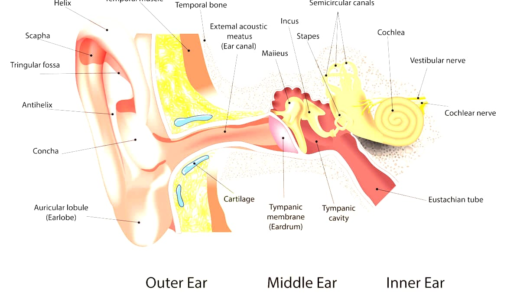Penguins exhibit unique characteristics, such as their exceptional swimming skills and monogamous relationships. They nurture their young through cooperative parenting and face modern challenges like climate change and pollution. Their role in ecosystems is crucial, making conservation efforts necessary for their survival.
Penguin Characteristics: What Makes Them Unique?
Penguin characteristics set these fascinating birds apart from others in the avian world. Firstly, their unique adaptation to cold climates is remarkable. Penguins possess a thick layer of blubber and dense feathers, which provide insulation against frigid temperatures. Their bodies are streamlined, allowing them to move efficiently through water.
Another intriguing feature is their social behavior. Penguins are known for their strong social bonds and monogamous relationships. Many species mate for life, engaging in elaborate courtship rituals that strengthen these bonds. They communicate through vocalizations and body language, showing how important social interaction is to their survival.
Additionally, penguins exhibit fascinating parenting behaviors. Both parents share responsibilities in caring for their young, ensuring the chicks are fed and protected. This cooperative breeding strategy is essential for the survival of their offspring in the harsh environments they inhabit.
Swimming Skills: How Penguins Swim Underwater
How penguins swim underwater is a true marvel of nature. Their wings have evolved into flippers, which they use to propel themselves through the water with incredible agility. Unlike most birds, penguins are flightless, but their swimming skills are unmatched. They can reach speeds of up to 15 miles per hour when swimming.
Underwater, penguins use their strong flippers and streamlined bodies to dive deep in search of food. Some species can dive to depths of over 1,800 feet! This ability to swim effectively is vital, as their diet primarily consists of fish, krill, and other marine creatures.
Moreover, penguins can hold their breath for several minutes while hunting. Their remarkable adaptations make them exceptional swimmers, allowing them to thrive in their aquatic environment.
Tuxedo Appearance: Why Penguins Are Called Tuxedoed Birds
Penguins are often referred to as tuxedoed birds due to their distinctive black and white coloration. This striking appearance serves a practical purpose known as countershading. The dark backs help them blend into the ocean depths when viewed from above, while their white bellies camouflage them against the bright surface when seen from below.
This tuxedo-like appearance not only makes penguins look dapper but also plays a crucial role in their survival. It helps them evade predators and enhances their hunting efficiency by allowing them to approach prey unnoticed.
In summary, the unique characteristics of penguins, their swimming skills, and their tuxedo appearance contribute to their fascinating existence as one of nature’s most beloved creatures. Understanding these traits helps appreciate their role in the ecosystem and the challenges they face in the wild.
Monogamy in Penguins: Understanding Their Relationships
Penguin characteristics include their unique approach to relationships, particularly their monogamous tendencies. Many penguin species, like the Emperor and Adélie penguins, form lifelong bonds with their partners. These strong connections are essential for their breeding success, as raising chicks requires teamwork.
During the breeding season, these dedicated couples reunite, often after months apart. They engage in vocalizations and physical displays, reaffirming their commitment. This monogamous behavior not only strengthens family ties but also enhances the survival chances of their young. In fact, studies show that monogamous pairs have higher chick survival rates compared to those that do not maintain long-term partnerships.
In summary, penguins’ monogamous relationships are a vital aspect of their social structure, ensuring that they work together effectively to raise their offspring in challenging environments.
Mating Rituals: How Penguins Court Each Other
Penguin mating rituals are fascinating and elaborate, showcasing their unique characteristics. During courtship, male penguins often perform impressive displays to attract females. These displays can include vocal calls, bowing, and even gift-giving, such as presenting pebbles to potential mates.
For example, Gentoo penguins are known for their pebble exchanges. A male will present a smooth stone to a female as a sign of affection and commitment. If she accepts, it symbolizes mutual interest and readiness to mate. This courtship dance not only builds a bond between partners but also reinforces their roles as co-parents.
Ultimately, these rituals help penguins establish strong relationships that are crucial for successful breeding and chick rearing.
Interesting Penguin Species: Fun Facts and Habitats
Penguins are a diverse group of birds, with several interesting species showcasing unique characteristics. The Emperor penguin, for instance, is the largest species, standing nearly four feet tall and weighing up to 90 pounds. They are known for their remarkable resilience, enduring the harshest Antarctic winters.
Other species, like the African penguin, inhabit warmer climates and are characterized by their distinctive black spots. These penguins often nest in burrows, providing shelter from the sun and predators. Meanwhile, the Little Blue penguin, the smallest species, is known for its charming appearance and playful behavior.
- Emperor Penguin: Largest species, famous for winter breeding.
- Adélie Penguin: Known for their classic tuxedo appearance and strong social bonds.
- African Penguin: Lives in warmer coastal regions; has a unique braying call.
- Little Blue Penguin: Smallest penguin, often found in Australia and New Zealand.
Understanding the various penguin species and their habitats helps appreciate their adaptations and roles within ecosystems. Each species contributes uniquely to the marine environment, emphasizing the importance of conservation efforts to protect them.
Caring for Young: How Penguins Nurture Their Chicks
Penguins are known for their remarkable parenting skills, which are a key aspect of their characteristics. After the eggs hatch, both parents take an active role in nurturing their chicks. This cooperative breeding strategy is vital for the survival of the young penguins in harsh environments.
Typically, one parent will stay with the chick to keep it warm, while the other goes hunting for food. Penguins have a unique adaptation called regurgitation, where they bring food back to the nest, providing their chicks with essential nutrients.
In addition, penguins exhibit protective behaviors. They create crèches, or groups of chicks, allowing them to stay safe while parents forage. These close-knit groups help ensure that all chicks receive care and protection from predators.
Overall, the nurturing behaviors of penguins emphasize their commitment to their young and the importance of teamwork in raising healthy offspring.
Modern Challenges: What Threats Do Penguins Face?
Penguins face numerous challenges in today’s world, significantly impacting their populations. Climate change is perhaps the most pressing issue, as it alters their habitats and affects food availability. Warmer ocean temperatures lead to changes in fish populations, making it harder for penguins to find food.
Additionally, pollution poses a severe threat. Oil spills and plastic waste in the oceans can harm penguins directly or disrupt their food sources. Overfishing also exacerbates the issue, as it reduces the availability of prey like krill and small fish.
Human activities, such as habitat destruction and climate change, have led to a decline in several penguin species. Conservation efforts are crucial to mitigate these threats and ensure the survival of these unique birds.
Penguins and Their Role in Ecosystems
Penguins play a vital role in their ecosystems, acting as indicators of ocean health. Their feeding habits help maintain the balance of marine life, as they consume large quantities of fish and krill, which prevents overpopulation of these species.
Moreover, penguins serve as prey for larger predators, contributing to the food web. Their presence is essential for maintaining biodiversity in their habitats.
Understanding penguins’ ecological roles highlights the importance of conservation efforts. Protecting their habitats and ensuring healthy populations is critical for the overall health of marine ecosystems.





Comments are closed.